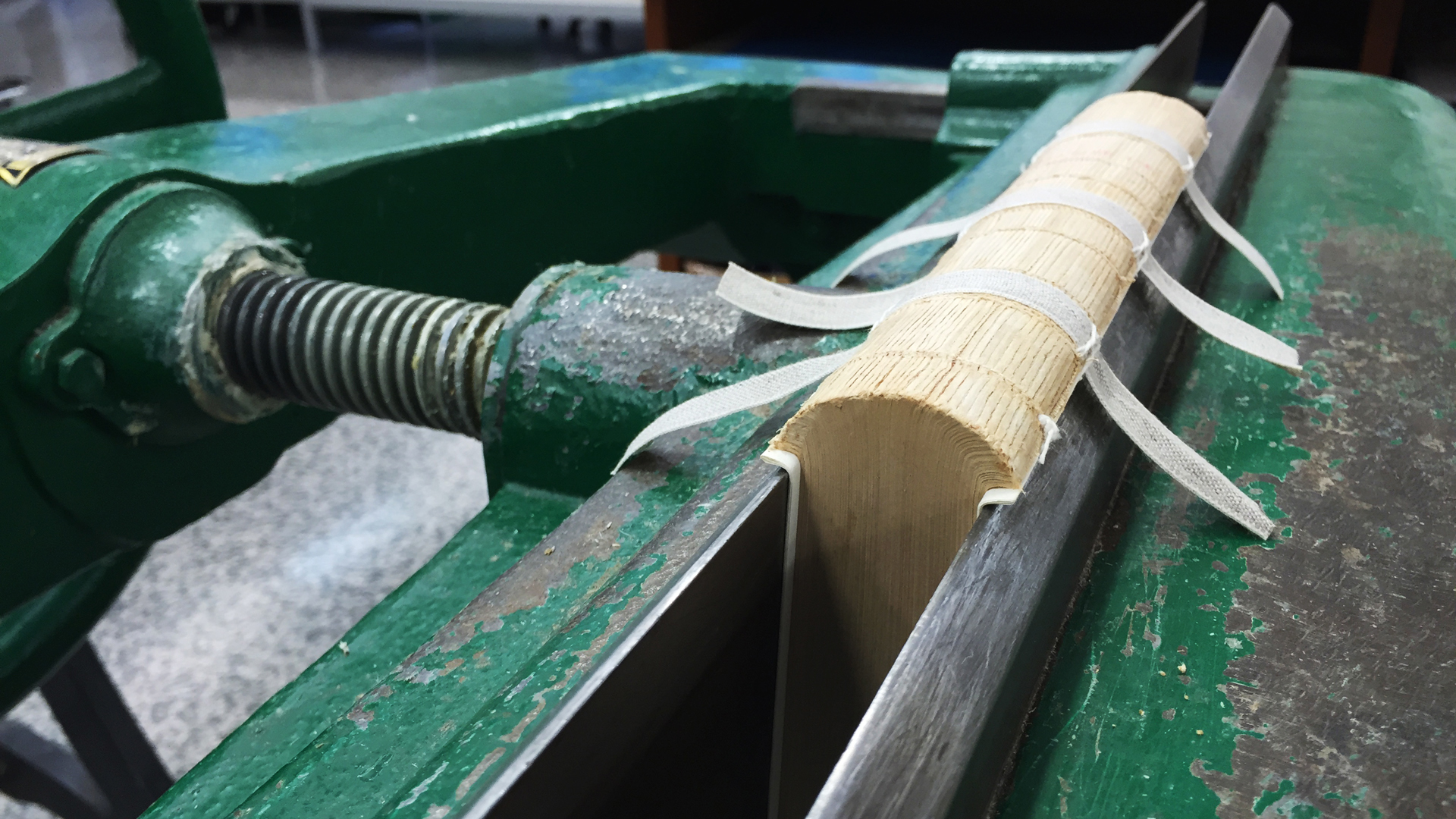
The spine of a book is held in a job backer for reshaping and application of spine linings

The spine of a book is held in a job backer for reshaping and application of spine linings
Greetings from Preservation! Our unit recently merged with the Special Collections Research Center, and we are excited to give you an overview of the many things we do!
Three of us make up the Preservation unit - Jamie Bradway, Preservation Librarian; Emily Schmidt, Conservation Lab Manager; and Robin Harper, Conservation Technician. We are responsible for the physical condition of collections in the Libraries. This means we repair and stabilize items as well as monitor environments, prepare for and respond to disaster events, and offer support for exhibits.
Our primary work is repair and support of both the general circulating collection and Special Collections. Our approach to each collection is different, depending on the purpose that collection has.
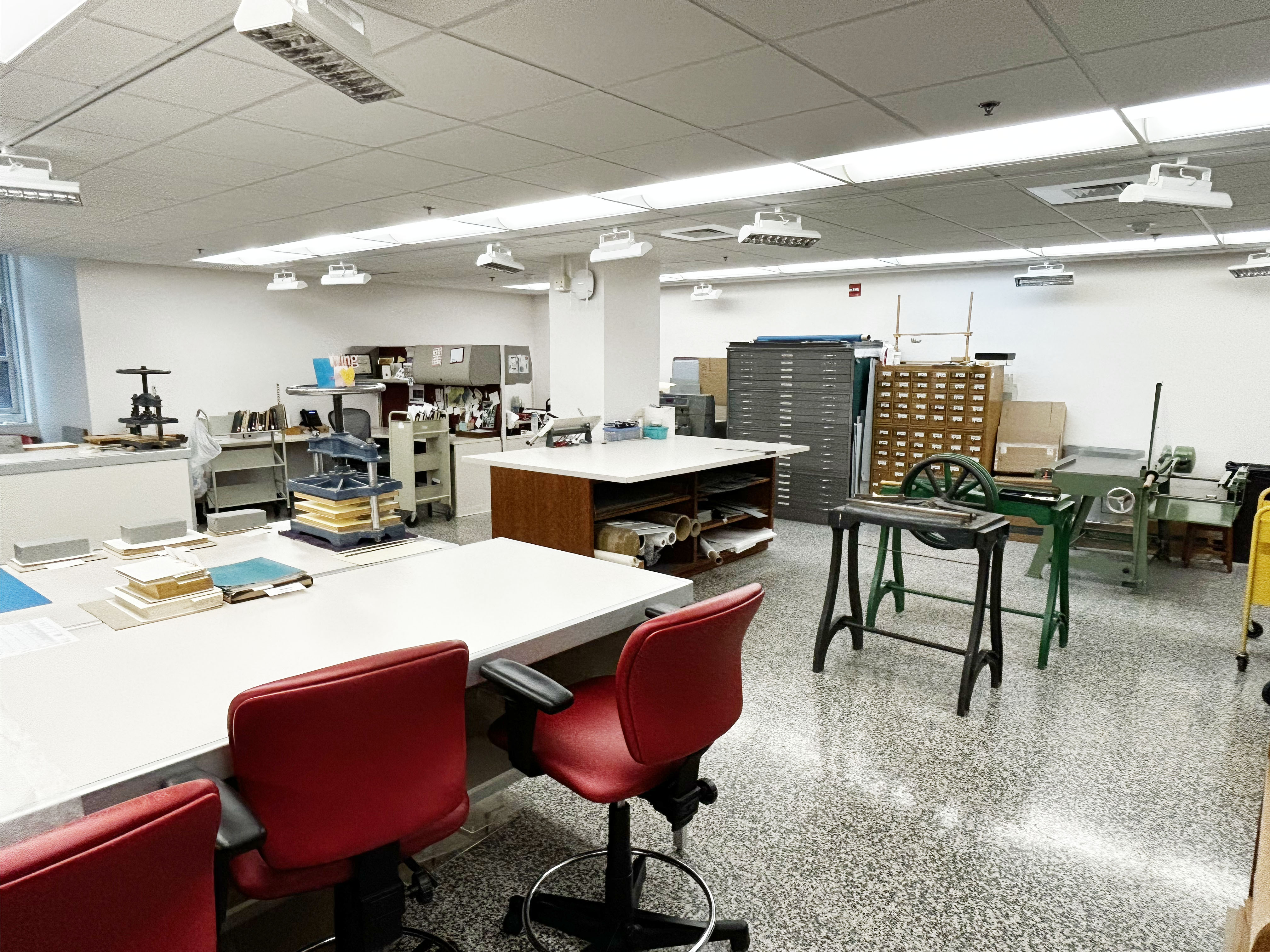
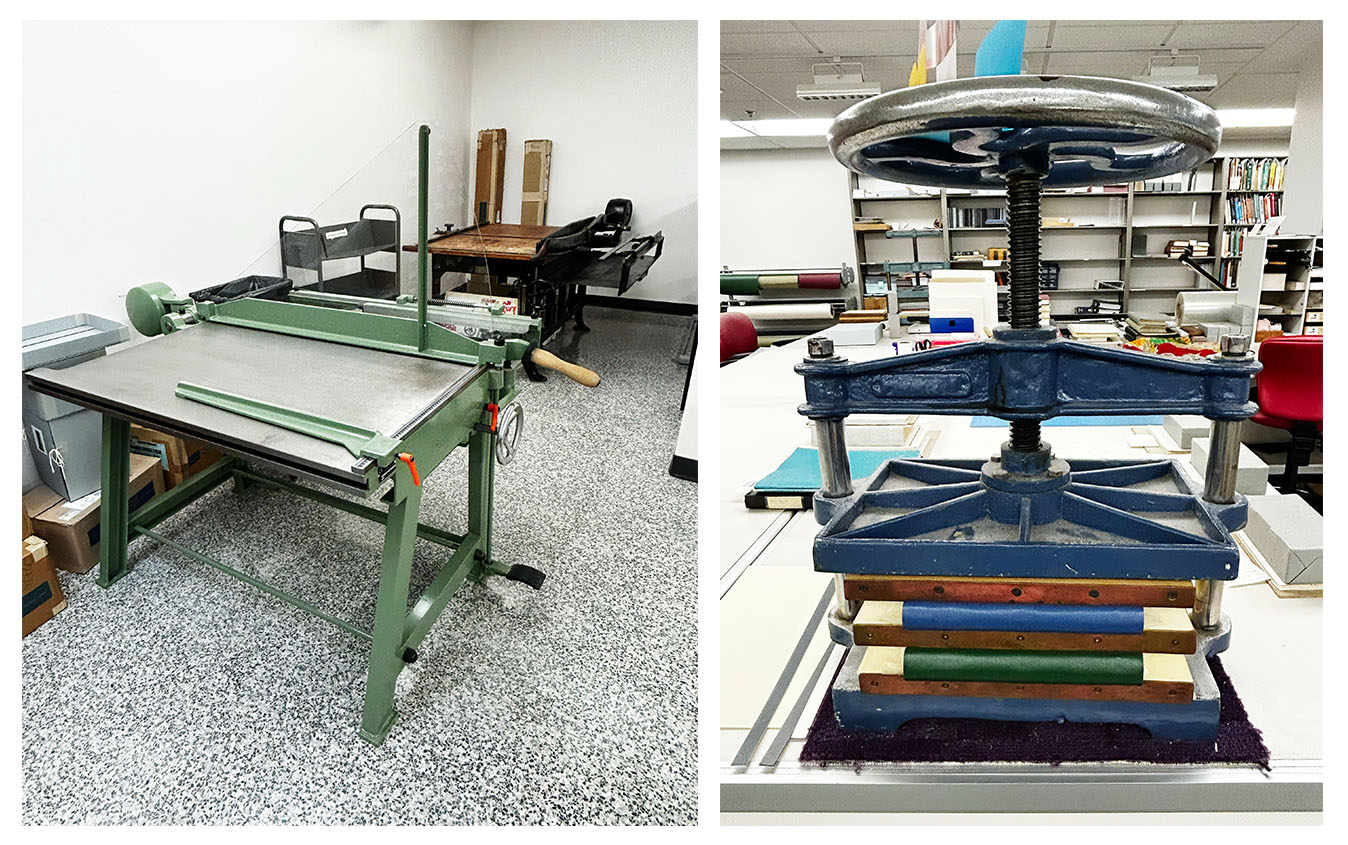
For the general collection, we are focused more on the content in the books rather than the binding itself. This means we rebind these books with more freedom, not worrying as much about maintaining the original covers. (If there are particularly interesting covers, though, we may indulge ourselves and incorporate them into the repair!) Repairs on these items range from replacing missing pages and small paper repairs to replacing spines and full rebinds. We send a portion of damaged materials to the HF Group - a commercial bindery in Greensboro - allowing us to focus on more heavily damaged, fragile and subject-focused items in-house. It’s important to note that we only work on damaged books that have recently circulated. This allows us to prioritize our efforts on materials that we know are currently valuable to patrons and researchers.
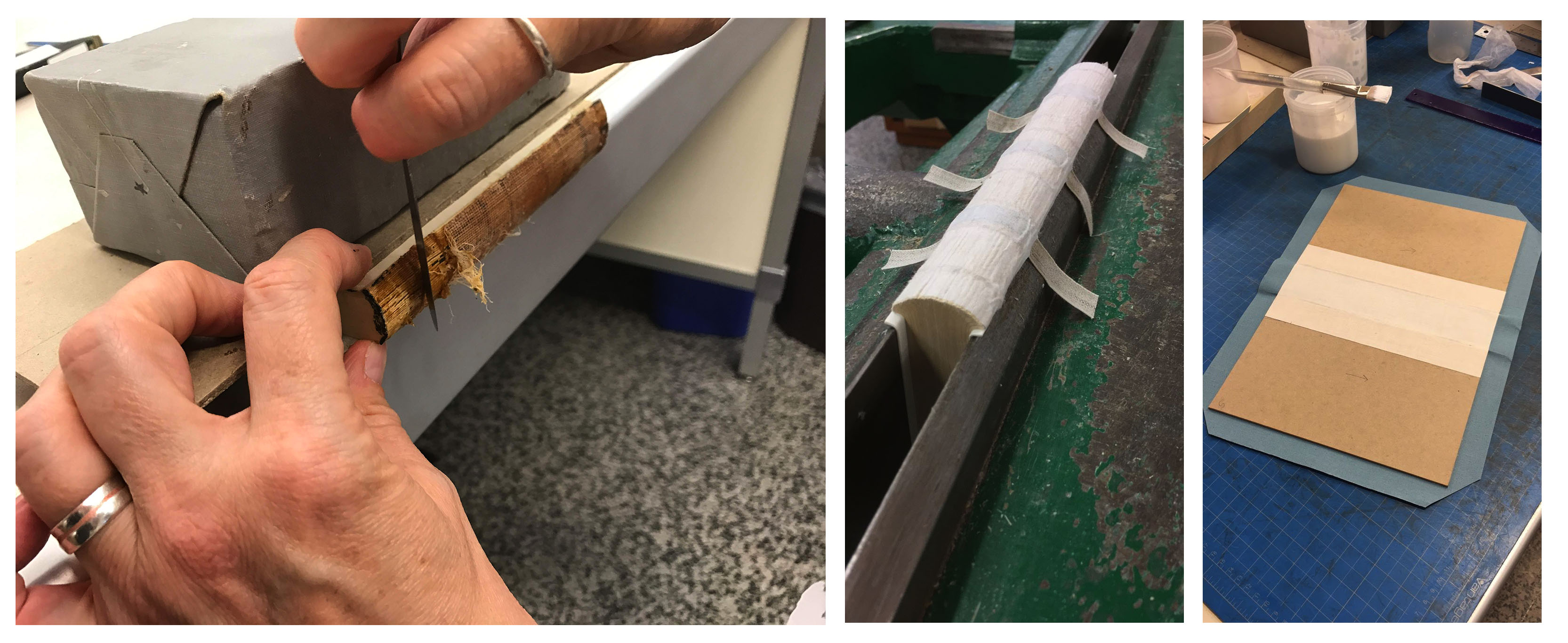
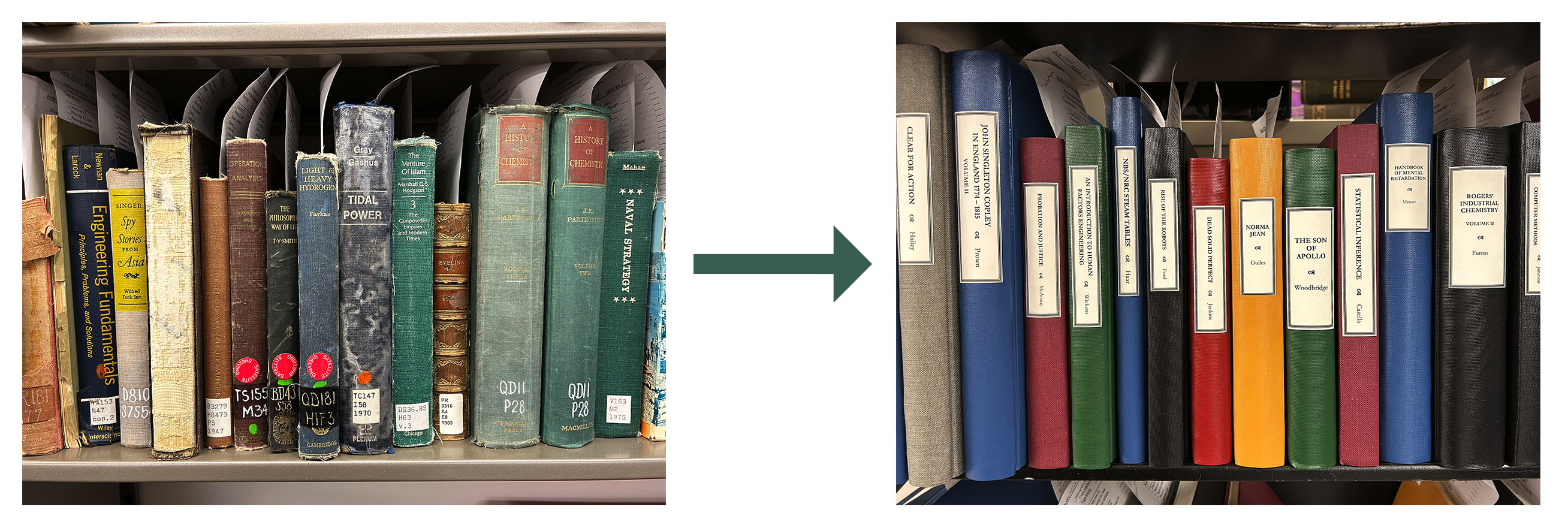
For Special Collections, many times the original binding is as important as the content inside. For this reason, we make more enclosures to stabilize items instead of strengthening or replacing the binding like we would for a circulating book. Envelopes, tuxedo boxes, corrugated boxes and rare book boxes are our specialty here. Special Collections items are also often challengingly sized and shaped, requiring unique solutions. Architectural models, ancient Peruvian beans, framed portraits, trophies, dresses, swords, and electric guitars are just a few examples of items we have made custom enclosures for over the years.
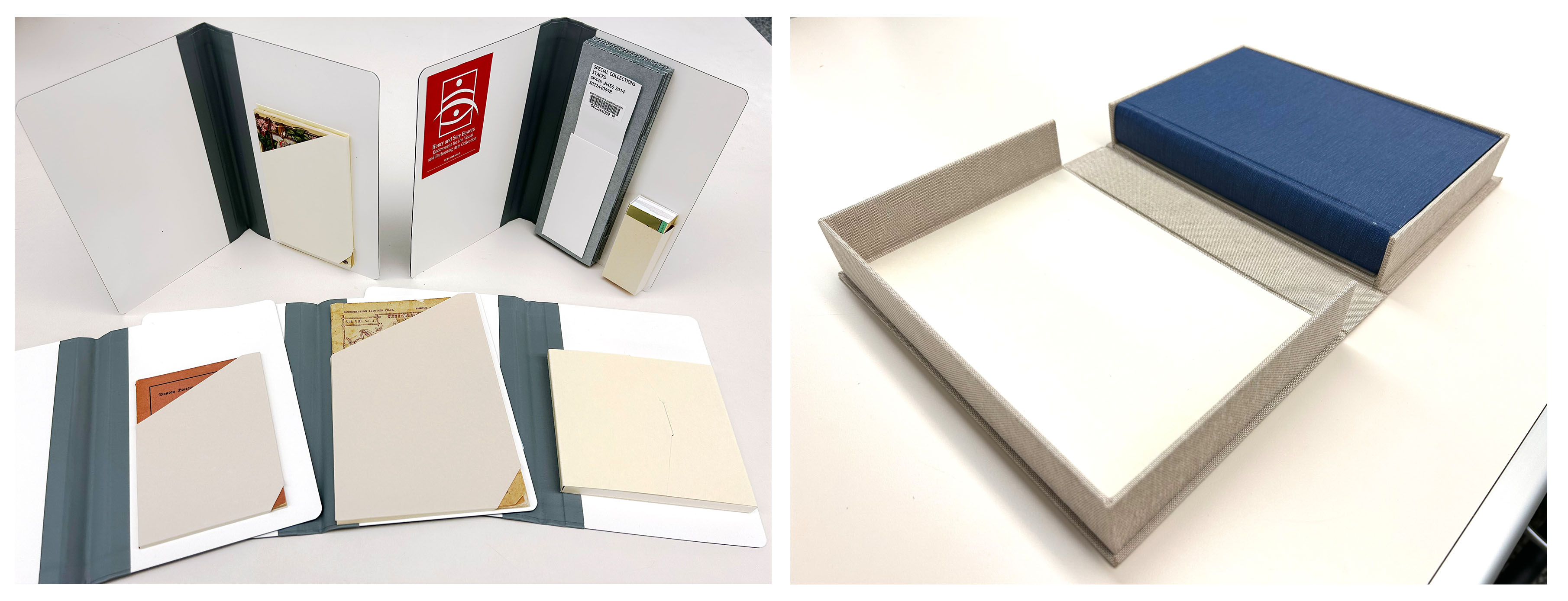

Another time Preservation is called into action for Special Collections is for architectural drawings that come to us rolled. Many of these will be housed in rolled storage, but often they need to be flattened for storage or scanning. We create a simple humidification chamber to soften these rolled drawings before putting them under weight to flatten. We recently completed work flattening the D.J. Rose and Son Architectural Drawings and Project Files.

Dangers to physical objects include more than wear and tear from use. Changes to temperature and humidity over time also pose a risk, and unforeseen water or fire events can cause major damage to collections. In addition to active repair work, we also keep an eye on environmental conditions in our library spaces and serve on the Disaster Response team.

Our protection of collection objects extends to how they are used in exhibits. As part of the exhibits team, we consult on which items are appropriate to be displayed and the best ways to display them. For the items that are stable enough for exhibit, we create custom cradles and supports, working with the design team to fit the space and vision of the show. The images below are from the current exhibit Dare and Do! Women’s History at NC State.
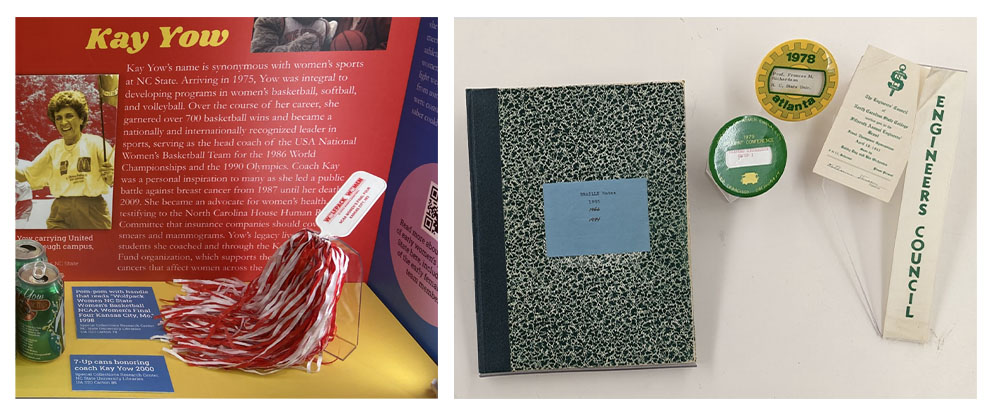
We also love lending our knowledge of bookbinding and book arts to the Libraries' teaching and outreach events! We’ve been happy to host notebook binding workshops, teach bindings and boxes to English classes, and offer paper crafts at the Crafting Resilience drop-in space. Our email address is below if you are interested in finding out more.
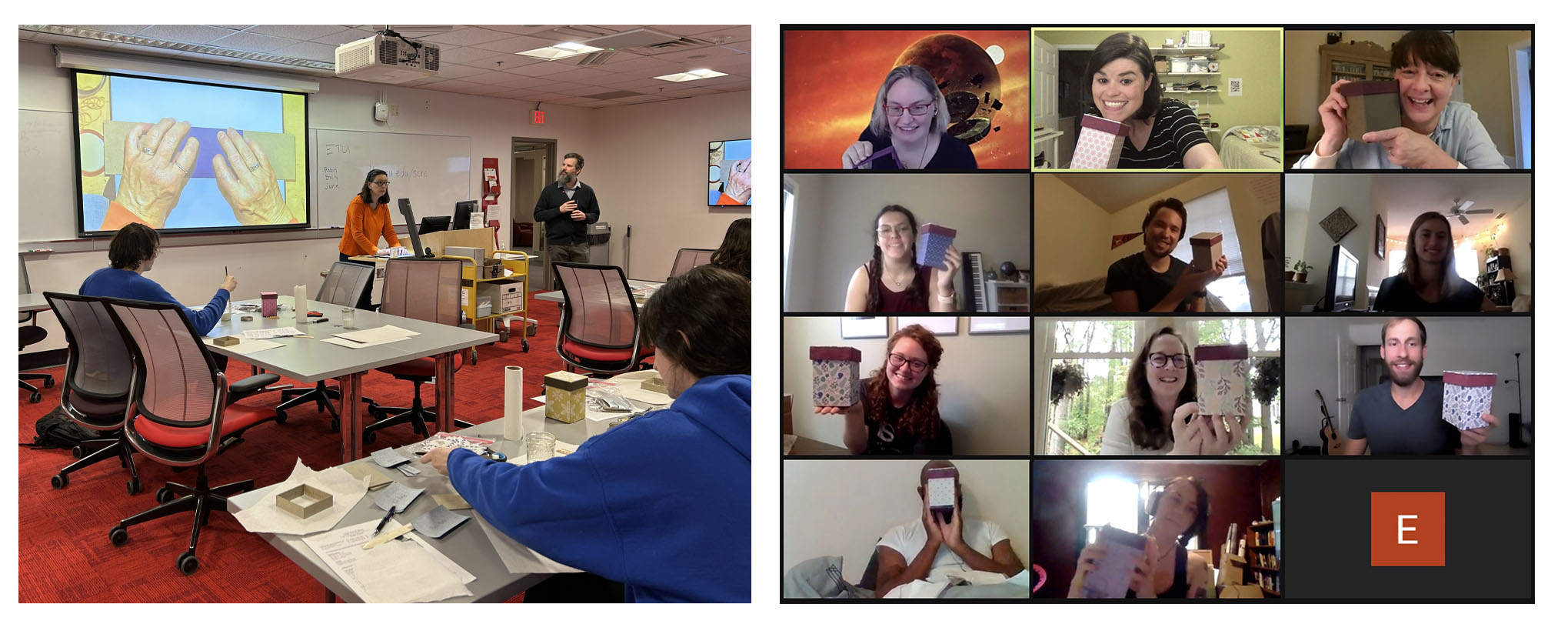

Hopefully we have piqued your interest into what we do in Preservation. We’ll be back to zoom in more closely and share details of the work we’ve mentioned here in future posts! Stay tuned!
If you have any questions or are interested in viewing Special Collections materials, please contact us at library_specialcollections@ncsu.edu or submit a request online. The Special Collections Research Center is open by appointment only. Appointments are available Monday–Friday, 9am–6pm and Saturday, 1pm–5pm. Requests for a Saturday appointment must be received no later than Tuesday of the same week.